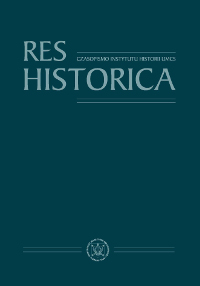
Between Stagnation and Modernisation. Economic and Social Transformations of Countryside in the Polish-Ruthenian Border in the Late Middle Ages (Example of Hrubieszów County)
Between Stagnation and Modernisation. Economic and Social Transformations of Countryside in the Polish-Ruthenian Border in the Late Middle Ages (Example of Hrubieszów County)
Keywords: Hrubieszów; Polish-Ruthenian frontier; medieval village; occidentalisation; German law; Ruthenian law
The presented article aims at showing legal, structural, economic, and social changes taking place in villages situated in the areas on the Polish-Ruthenian border, with the example of Hrubieszów County in Chełm Land. On the basis of the analysis of the surviving sources (in particular the land registry with records of yearly courts in Hrubieszów, which so far has been used very rarely), the authors present means of permeation of the new model of village functioning on the basis of the German law into the socio-economic structures preserved in the areas of the Ruthenian lands. In the light of the conducted studies, emerges an area that was under the influence of new solutions coming from the west; it was partially adapted, but simultaneously, the former method of organizing a village was to a large extent preserved. The problem is all the more complex since confronting these two economic solutions was overlapped with the religious and ethnic divisions. Therefore, it was necessary to shed some light on the connections between these transformations and the influx of foreign, migrating population. The article also presents factors that determined either the intensification or weakening of the ongoing changes.
More...
